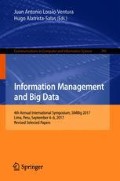Abstract
Child labor is a relevant problem in developing countries because it may have a negative impact on economic growth. Policy makers and government agencies need information to correctly allocate their scarce resources to deal with this problem. Although there is research attempting to predict the causes of child labor, previous studies have used only linear statistical models. Non-linear models may improve predictive capacity and thus optimize resource allocation. However, the use of these techniques in this field remains unexplored. Using data from Peru, our study compares the predictive capability of the traditional logit model with artificial neural networks. Our results show that neural networks could provide better predictions than the logit model. Findings suggest that geographical indicators, income levels, gender, family composition and educational levels significantly predict child labor. Moreover, the neural network suggests the relevance of each factor which could be useful to prioritize strategies. As a whole, the neural network could help government agencies to tailor their strategies and allocate resources more efficiently.
Access this chapter
Tax calculation will be finalised at checkout
Purchases are for personal use only
References
Hanushek, E.A.: Economic growth in developing countries: the role of human capital. Econ. Educ. Rev. 37, 204–212 (2013)
Goldin, C.: Human capital. In: Diebolt, C., Haupert, M. (eds.) Handbook of Cliometrics, pp. 55–86. Springer, Heidelberg (2016). https://doi.org/10.1007/978-3-642-40406-1_23
Becker, G.: Investment in human capital: a theoretical analysis. J. Polit. Econ. 70, 9–49 (1962)
Susanli, Z.B., Inanc-Tuncer, O., Kologlugil, S.: Child domestic labour and mothers’ employment in Turkey. Econ. Res. Ekonomska Istraživanja 29(1), 967–979 (2016)
Dimova, R., Epstein, G.S., Gang, I.N.: Migration, transfers and child labor. Rev. Dev. Econ. 19(3), 735–747 (2015)
López Yucra, K.G.: Determinantes del trabajo infantil y la deserción escolar en menores de 12 a 17 años en el perú para los años 2006 y 2014 (2016)
Sausa, M.: El trabajo infantil es más alto y más penoso en las zonas rurales. Perú 21 (2016)
Lima, L.R., Mesquita, S., Wanamaker, M.: Child labor and the wealth paradox: the role of altruistic parents. Econ. Lett. 130, 80–82 (2015)
Emerson, P.M., Ponczek, V., Souza, A.P.: Child labor and learning. Econ. Dev. Cult. Change 65(2), 265–296 (2017)
De Paoli, A., Mendola, M.: International migration and child labour in developing countries. World Econ. 40(4), 678–702 (2017)
D’alessandro, S., Fioroni, T.: Child labour and inequality. J. Econ. Inequality 14(1), 63 (2016)
Rodrigues, D.C., Prata, D.N., Silva, M.A.: Exploring social data to understand child labor. Int. J. Soc. Sci. Humanity 5(1), 29 (2015)
Emerson, P.M., Souza, A.P., et al.: Bargaining over sons and daughters: child labor, school attendance and intra-household gender bias in Brazil. Technical report, Working Paper (2002)
Sapelli, C., Torche, A.: Deserción Escolar y Trabajo Juvenil: ¿Dos Caras de Una Misma Decisión? Cuadernos de economía 41, 173–198 (2004)
Lavado, P., Gallegos, J.: La dinámica de la deserción escolar en el Perú: un enfoque usando modelos de duración. (05–08), September 2005
García, L.: The supply of child labor and household work, (31402) (2006)
Gunnarsson, V., Orazem, P.F., Sanchez, M.A.: Child labor and school achievement in Latin America. World Bank Econ. Rev. 20, 31–54 (2006)
Alcázar, L.: Asistencia y deserción en escuelas secundarias rurales del Perú, pp. 41–82 (2008)
Rodríguez, J., Vargas, S.: Trabajo infantil en el perú. magnitud y perfiles vulnerables. informe nacional 2007–2008 (2009)
Le, H.T., Homel, R.: The impact of child labor on children’s educational performance: evidence from rural Vietnam. J. Asian Econ. 36, 1–13 (2015)
He, H.: Child labour and academic achievement: evidence from Gansu province in china. China Econ. Rev. 38(C), 130–150 (2016)
Abdou, H., Pointon, J., El-Masry, A.: Neural nets versus conventional techniques in credit scoring in Egyptian banking. Expert Syst. Appl. 35(3), 1275–1292 (2008)
Altman, E.I., Marco, G., Varetto, F.: Corporate distress diagnosis: comparisons using linear discriminant analysis and neural networks (the Italian experience). J. Banking Finan. 18(3), 505–529 (1994)
Lattin, J.M., Carroll, J.D., Green, P.E.: Analyzing Multivariate Data, vol. 1. Thomson Brooks/Cole, Florence (2003)
Hosmer, D.W., Lemeshow, S., Sturdivant, R.X.: Applied Logistic Regression. Wiley Series in Probability and Statistics. Wiley, Hoboken (2013)
Press, S.J., Wilson, S.: Choosing between logistic regression and discriminant analysis. J. Am. Stat. Assoc. 73(364), 699–705 (1978)
Haykin, S.: A comprehensive foundation. Neural Netw. 2, 41 (2004)
Zurada, J.M.: Introduction to Artificial Neural Systems. West, St. Paul (1992)
Bishop, C.M.: Neural Networks for Pattern Recognition. Oxford University Press Inc., New York (1995)
Rumelhart, D.E., Hinton, G.E., Williams, R.J.: Learning internal representations by error propagation. In: Parallel Distributed Processing: Explorations in the Microstructure of Cognition, pp. 318–362. MIT Press (1986)
Hair, J.F., Ringle, C.M., Sarstedt, M.: PLS-SEM: indeed a silver bullet. J. Mark. Theory Pract. 19(2), 139–152 (2011)
Box, G.E., Tidwell, P.W.: Transformation of the independent variables. Technometrics 4(4), 531–550 (1962)
Tabachnick, B., Fidell, L.: Multivariate analysis of variance and covariance. In: Using Multivariate Statistics. Allyn and Bacon, Boston (2007)
Author information
Authors and Affiliations
Corresponding author
Editor information
Editors and Affiliations
Rights and permissions
Copyright information
© 2018 Springer International Publishing AG, part of Springer Nature
About this paper
Cite this paper
Libaque-Saenz, C.F., Lazo, J., Lopez-Yucra, K.G., Bravo, E.R. (2018). Could Machine Learning Improve the Prediction of Child Labor in Peru?. In: Lossio-Ventura, J., Alatrista-Salas, H. (eds) Information Management and Big Data. SIMBig 2017. Communications in Computer and Information Science, vol 795. Springer, Cham. https://doi.org/10.1007/978-3-319-90596-9_2
Download citation
DOI: https://doi.org/10.1007/978-3-319-90596-9_2
Published:
Publisher Name: Springer, Cham
Print ISBN: 978-3-319-90595-2
Online ISBN: 978-3-319-90596-9
eBook Packages: Computer ScienceComputer Science (R0)

